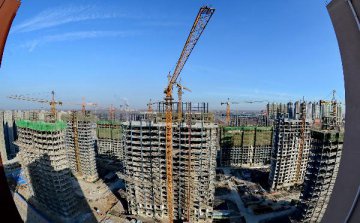
Ji Guang, vice general manager of Lijiang-Shangri-La Expressway Investment Company, arrived at a construction site to oversee progress on the first expressway in the Tibetan areas of southwest China's Yunnan Province.
The Lijiang-Shangri-La Expressway has drawn almost 5 billion yuan (723 million U.S. dollars) of investment this year. It is expected to cost a total of 22 billion yuan when it is finished by the end of 2019.
Lijiang and Shangri-La are both popular tourist destinations in Yunnan. "It will shorten the driving time between Lijiang and Shangri-La from the current 3.5 hours to 1.5 hours upon completion," Ji said.
Yunnan is one of several regions in central and western China experiencing a surge in fixed asset investment. So far, 31 provinces, municipalities and autonomous regions in China have reported their fixed asset investment figures for the first three quarters of this year.
Among them, western and central regions such as Yunnan saw significant investment growth, the Shanghai Securities News (SSN) said in a report on Thursday.
The southwestern province of Guizhou recorded the highest investment growth rate of 21.7 percent year on year, followed by Tibet and Yunnan, also in the southwest.
Other western and central regions such as Guangxi, Hubei, Sichuan and Chongqing also saw their investment grow by more than 12 percent year on year.
Meanwhile, investment growth in infrastructure construction was above 20 percent in more than half of all the 31 localities, according to the SSN report.
In western and central regions, the rate was even higher, with Inner Mongolia, Yunnan, Chongqing and Shaanxi all reporting growth of more than 30 percent year on year.
"Investment in building infrastructure is an important support for all investment in the province, and we will try to get more projects under favorable state policies for western areas," Guizhou's provincial bureau of statistics said in an analysis of its investment figures.
The statistics bureau of Hunan Province voiced a similar opinion, with a statement saying that the province will speed up construction of railways, parking lots and rural infrastructure.
As China implements the Belt and Road Initiative by opening further to Central Asia and the Middle East, China's western inland regions are speeding up infrastructure construction, particularly transportation.
In order to absorb more private capital into the building of infrastructure, China has been promoting public-private partnerships, a type of partnership between government and private organizations based on franchise agreements.
The People's Bank of China has provided pledged supplementary lending (PSL) to financial institutions to fund housing renovation projects.
PSL can effectively channel medium- and long-term loans to the infrastructure construction sector, said Peng Wensheng, economist with CITIC Securities.
Xu Gao, chief economist with Everbright Securities, said investment in infrastructure is currently an important force to fuel economic growth at a time when exports and real estate investment are lackluster.
Dong Di, head of the economic research institute at Yunnan Academy of Social Sciences, said that infrastructure in China's underdeveloped western regions is still insufficient, so there is a lot of room for investment in this area.
"Investment is still a main engine for China's economic growth and it will continue to grow at a comparatively high speed within a certain period of time, but the regional differences will become obvious," said Feng Yongqi, associate professor at Jilin University.
The well-developed eastern coast has less potential to attract fixed-asset investment, while central and western regions will continue their high-speed growth in investment, Feng said.




















Latest comments